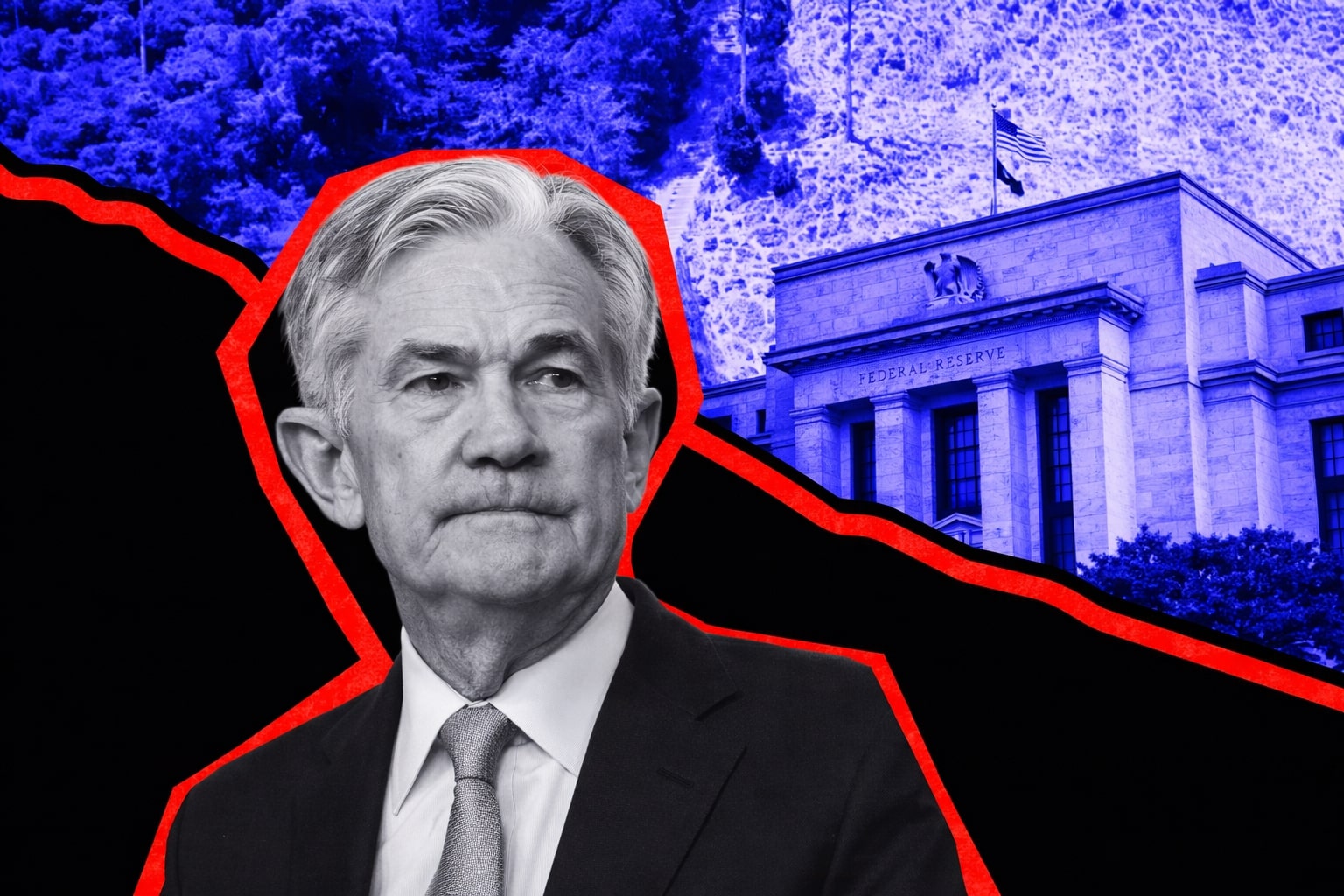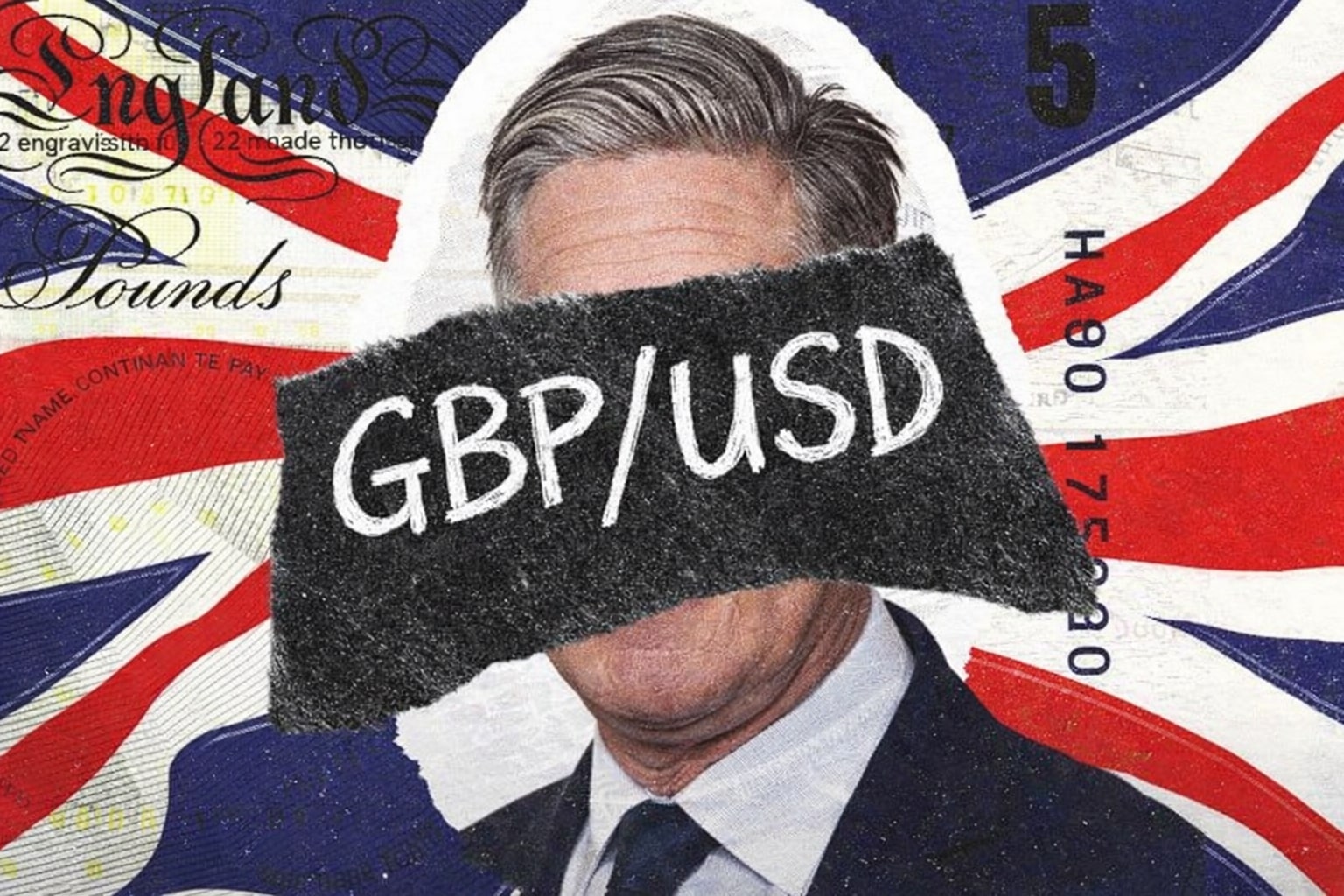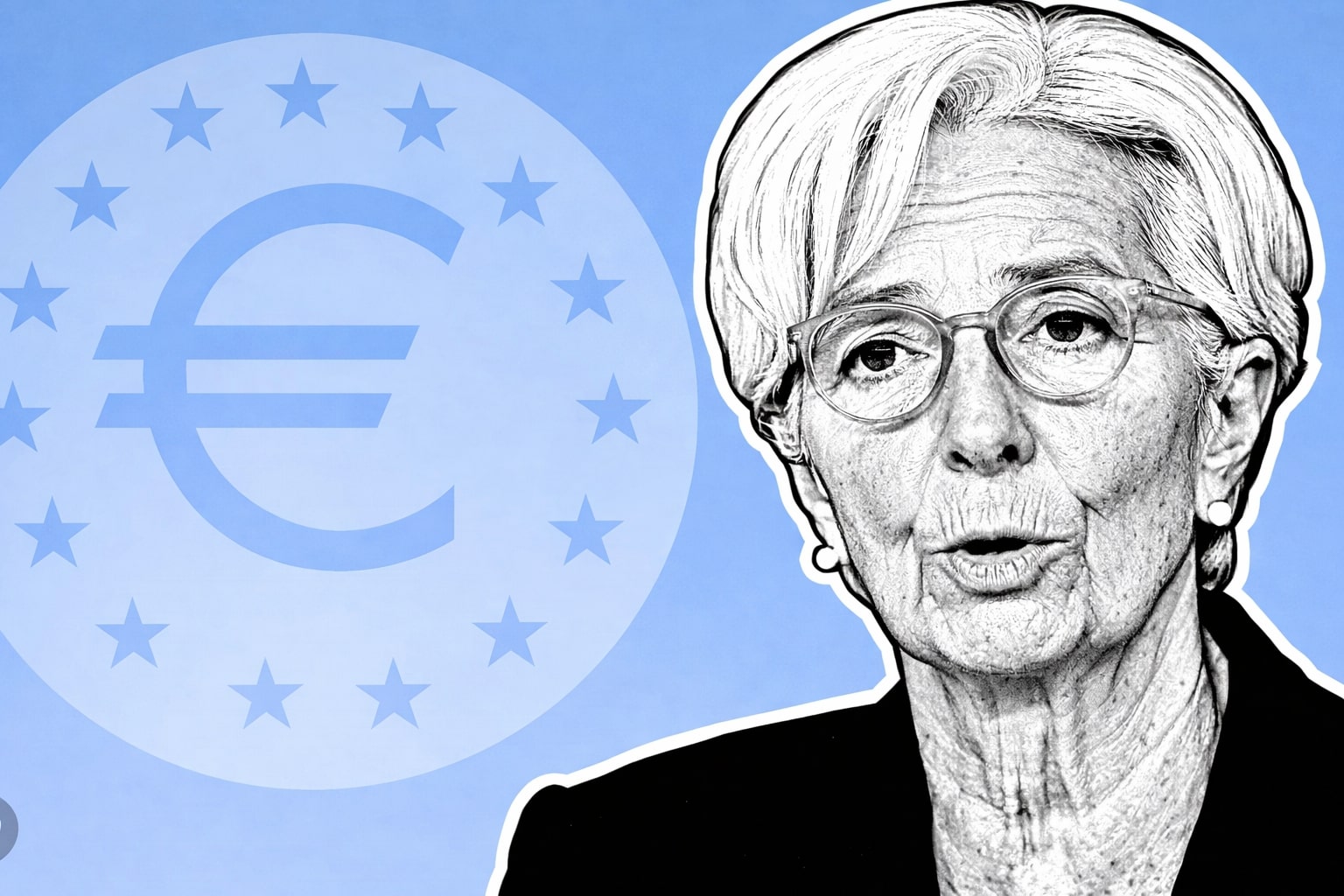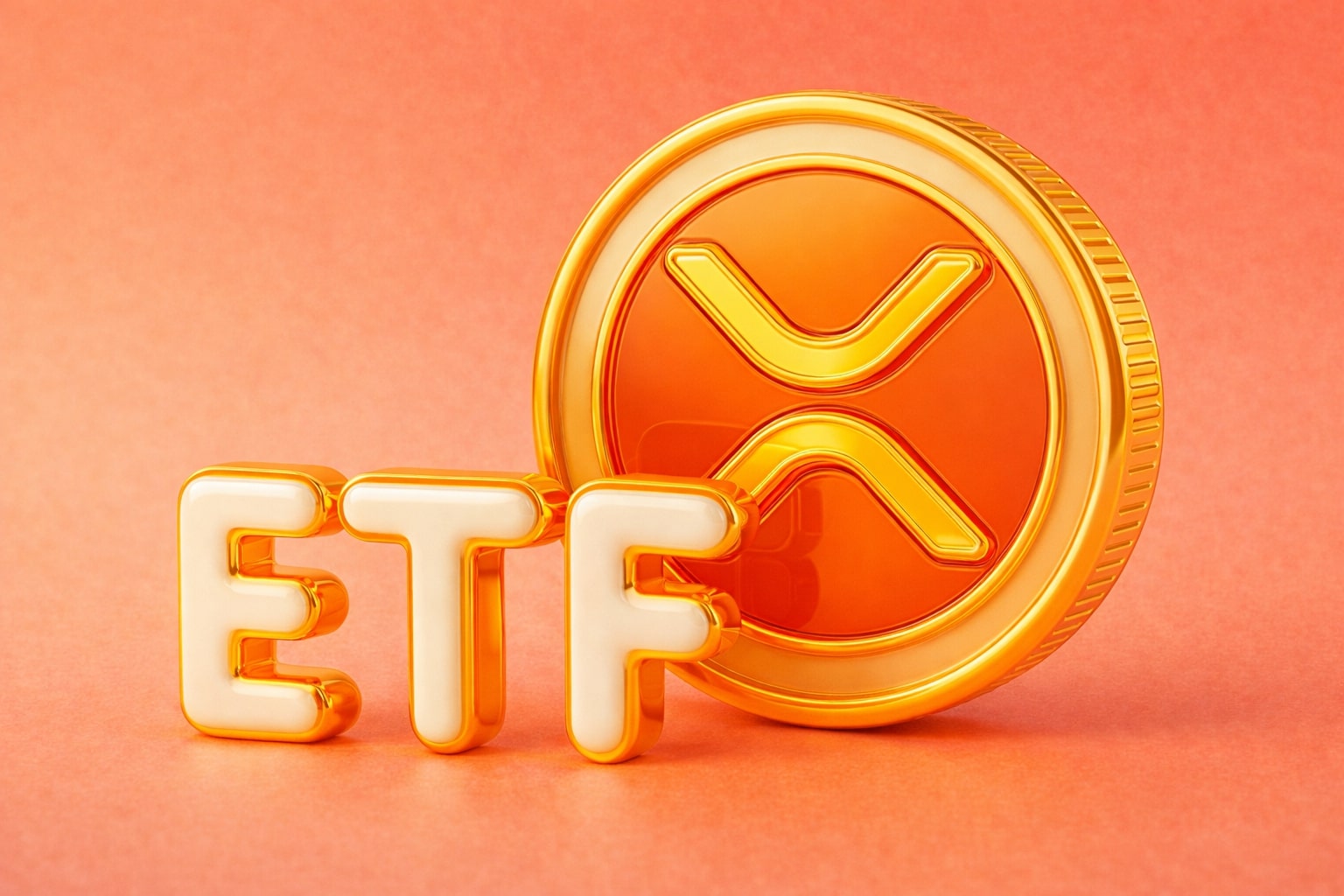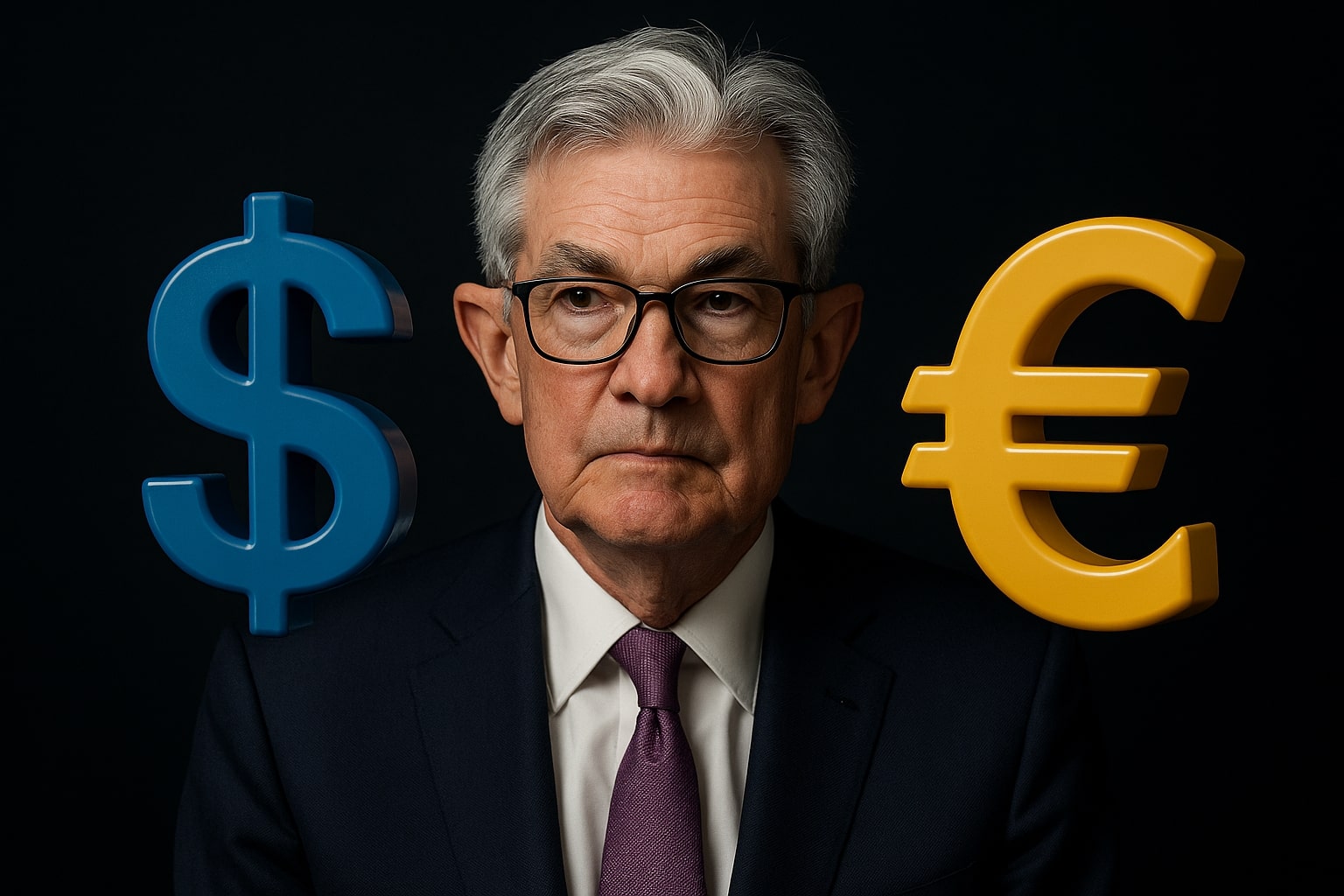
EUR/USD Hits $1.1700 as Dollar Cracks Under Powell Scrutiny and Tariff Turmoil
Euro bounces from $1.1569 double bottom as traders eye ECB pause and DXY slips below $98. All eyes on Powell, August 1 tariff fallout, and $1.1750 breakout | That's TradingNEWS
EUR/USD Edges Higher as Tariff Deadline and Fed Uncertainty Roil Dollar Confidence
EUR/USD Breaks Toward $1.1700 as Buyers Reclaim Bullish Control from Double Bottom at $1.1569
The EUR/USD pair extended its recovery to touch $1.1700, reversing sharply from last week’s double-bottom at $1.1569, a level that triggered bullish re-engagement across short- and medium-term traders. The upside comes amid growing pressure on the U.S. Dollar Index (DXY), which slipped beneath its 100-day EMA at $98.10, now hovering at $97.87, as tariff fears and political scrutiny over the Fed weigh on the dollar’s safe-haven status.
Momentum has shifted in favor of euro bulls with the pair breaking back above both the 50-EMA ($1.1653) and 100-EMA ($1.1659) on the daily chart. Buyers are now eyeing a clear push above $1.1720, a critical neckline for trend validation. A clean breakout could open doors to test $1.1750, and if breached, bullish extensions toward $1.1782–$1.1830 become viable. However, hesitation persists at each of these barriers due to fragile macro conditions on both sides of the Atlantic.
Macro Catalysts Align as ECB Holds Rates and Fed Faces Growing Political Heat
Traders now position around two polarizing monetary narratives. The European Central Bank (ECB) is expected to pause its rate-cut cycle after eight consecutive reductions, with policymakers likely holding the deposit facility at 2.00% during the July 24 meeting. This pause reflects lingering uncertainty over the impact of new U.S. tariffs and the Euro’s recent strength on inflation dynamics within the Eurozone. While the market debates whether this signals the end of cuts or merely a pause, expectations lean toward one final 25bps cut in September, if inflation expectations wobble further.
Across the Atlantic, the Federal Reserve is facing intense political and internal strife. Treasury Secretary Scott Bessent openly criticized the Fed’s expanding mandate, calling for a structural overhaul, while former President Donald Trump reignited pressure on Chair Powell, alleging slow response to inflation and interest rate misalignment. Despite denying reports of Powell’s potential dismissal, the market views this as another layer of political instability.
The Fed is now cornered between resisting tariff-driven inflation and responding to softening macro data. Real yields are softening, and markets have priced in a 58.3% chance of a rate cut in September, down from nearly 70% last month, as Powell prepares for public remarks. The ongoing scrutiny of his leadership, including Rep. Anna Luna’s perjury accusation over the Fed HQ’s renovation, is likely to diminish the credibility of forward guidance, placing further pressure on the dollar.
Trade Friction Risks Amplify Volatility Across Dollar Pairs, Boosting EUR/USD Speculation
The August 1 tariff deadline set by the White House looms large. Commerce Secretary Howard Lutnick confirmed that the new tariffs will proceed regardless of negotiation outcomes, sending ripples through global currency markets. EU envoys are preparing emergency countermeasures, and Germany’s rhetoric has turned aggressively defensive. The Euro’s rally has partly been driven by anticipatory hedging, as traders expect tit-for-tat tariffs to boost inflation in the U.S., potentially forcing the Fed into a faster easing cycle.
Additionally, market chatter hints at the U.S. seeking over 10% blanket tariffs on a broad spectrum of EU goods. If enacted, this policy would reinforce the Euro’s yield advantage, especially in a scenario where the ECB is done cutting and the Fed must resume easing into year-end.
Technical Setup: EUR/USD Clears Key Resistance Bands, Eyes $1.1780
Technically, EUR/USD remains inside a recovery channel, but has not yet validated a sustained bullish reversal. Support levels to watch are $1.1650, $1.1613, and the deeper $1.1565—a zone that acted as the last significant springboard for the pair’s upside. On the resistance side, $1.1720 remains pivotal; above that lies $1.1750, followed by the March high at $1.1782 and then $1.1830, where trend exhaustion may emerge.
The 14-day RSI stands at 56, favoring further gains, while MACD has exited bearish territory and is now in neutral, signaling momentum is returning. However, a clean daily close above $1.1750 is needed for trend confirmation. A rejection at this level would likely push the pair back toward $1.1580, the lower boundary of the weekly range.
Intraday price signals also reflect strong volume accumulation near $1.1633–$1.1668, suggesting demand-side conviction. Repeated defenses of this zone during U.S. trading hours point to institutional accumulation under the surface, positioning ahead of Powell’s anticipated commentary.
Dollar Index Faces Inflection as $97.70 Becomes Decisive Line
The U.S. Dollar Index (DXY), which underpins EUR/USD’s upside narrative, continues to weaken under technical and macro stress. The index remains vulnerable as long as it trades below $98.10. Immediate support lies at $97.80, followed by $97.55 and then $97.27—levels that, if breached, could trigger a cascading drop in dollar valuation across the board.
A weekly close under $97.70, a multi-year support level, would formally trigger a bearish continuation pattern in the DXY, suggesting further losses in the dollar that could lift EUR/USD toward $1.1900 over the coming weeks. The strength of this breakdown depends on Powell’s messaging and the actual rollout of the August 1 tariffs.
Liquidity and Flow Dynamics: Range Compression Gives Way to Expansion Risks
The EUR/USD has spent the past 10 sessions consolidating within a tight 155-pip band between $1.1565 and $1.1720, frustrating directional traders but offering fertile ground for breakout setups. Recent volatility compression may be reaching its inflection point. The Average True Range (ATR) has begun to rise from a 2-month low, suggesting that post-Powell commentary could deliver the volume and price aggression needed to break the range.
Positioning data from major brokers reveals a 51% net-long bias, suggesting the market is neutral to slightly bullish, which historically favors breakout follow-through in EUR/USD if Powell surprises dovish.
Trading Strategy Zones and Risk Parameters
Key buy zones for bulls are clustered at $1.1633, $1.1617, and $1.1580, where bullish price action has repeatedly surfaced. On the flip side, short sellers are likely to reload near $1.1727 and $1.1765, with clear stops layered just above the $1.1830 breakout level. Price action around $1.1720 remains the focal zone where buyers and sellers converge, and any high-volume rejection here could spark a volatility event in either direction.
If the market closes above $1.1750 with volume confirmation and DXY closes below $97.70, breakout traders will likely drive EUR/USD toward $1.2000, a psychologically significant milestone last seen before the May channel breakdown.
Buy, Sell, or Hold Verdict on EUR/USD
The EUR/USD pair is reasserting bullish structure from a macro and technical standpoint. Political destabilization in the U.S., paired with trade tensions and the ECB’s likely rate pause, sets the Euro up for medium-term outperformance. The dollar’s structural weakness and Powell’s credibility erosion suggest asymmetric upside in the pair.
As long as EUR/USD holds above $1.1650, the path of least resistance is upward. A confirmed break over $1.1750–$1.1782 would cement this rally. Given the realignment of yield expectations, central bank divergence, and breakout-ready structure, EUR/USD is a BUY, with upside targets at $1.1830 and $1.2000, contingent on Powell’s tone and the August 1 trade execution.
That's TradingNEWS
Read More
-
UCO ETF Price Forecast: Can NYSEARCA:UCO at $18.57 Ride a 2026 Oil Squeeze?
18.12.2025 · TradingNEWS ArchiveStocks
-
XRPI at $10.50 and XRPR at $14.93 Hit XRP ETF Lows While XRP-USD Holds $1.84 After 30 Days of Inflows
18.12.2025 · TradingNEWS ArchiveCrypto
-
Natural Gas Price Forecast: Henry Hub Holds Around $4 as EIA Draw Hits 167 Bcf
18.12.2025 · TradingNEWS ArchiveCommodities
-
USD/JPY Price Forecast: Pair Holds Above 155 As BoJ And US CPI Set Up A Major Break
18.12.2025 · TradingNEWS ArchiveForex














